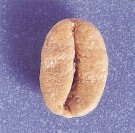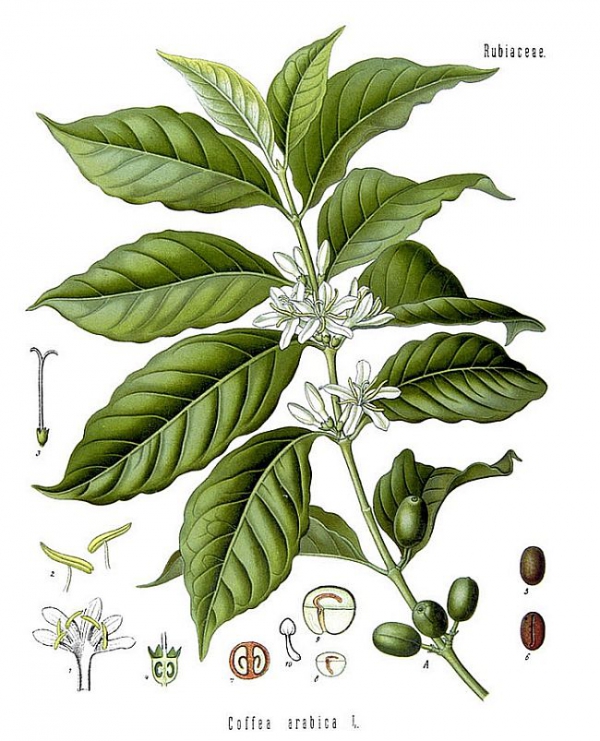1. Environmental Conditions:
The arabica coffee shrub typically grows between 2.5-4.5 meters (8.2-14.7 ft) in height, requires a temperature between 15°-24°C (59-75°F) and an annual rainfall of about 1200-2200 mm/yr. Robusta grows slightly taller at 4.5-6.5 meters (8.2-21.3 ft), requires a warmer temperatures of 18°-36°C (64-97°F) and slightly more rainfall (2200-3000 mm/yr) than arabica. In terms of yield, Arabica produces less coffee per hectare than robusta, making the cost of growing arabica much higher.

2. Coffee Bean Shape:
Arabica coffee beans are have a slightly larger/elliptical shape than the smaller, more round robusta beans. Structural differences also exist between the beans, which may explain why both beans roast differently under identical conditions.
 |
 |
| Arabica | Robusta |
3. Caffeine and Chlorogenic Acid:
Due to their bitter taste, both caffeine and chlorogenic acid (CGA) are believed to act as deterrents for insects and animals. Because Robusta contains about twice the concentration of both caffeine and CGA, it the plant much more 'robust' in the wild.

Chlorogenic Acid
(C16H18O9)

4. Lipid and Sugar Content
Arabica contains almost 60% more lipids and almost twice the concentration of sugars than robusta. As a result these sugars play an important role during the roasting process in creating several key aromatic compounds, as well as contributing to the body due to its greater level of dissolved solubles.
 Sucrose
Sucrose
(C12H22O11)

5. Pollination:
Arabica is self-pollinating plant, meaning the plant will have fewer mutations and fewer variations throughout its life cycle as compared to robusta.
6. Number of Chromosomes:
Arabica has double the number of chromosomes at 44 than robusta at 22.
While not comprehensive these are some of the basic differences between the both coffee species.
Photo credit: Wikipedia

